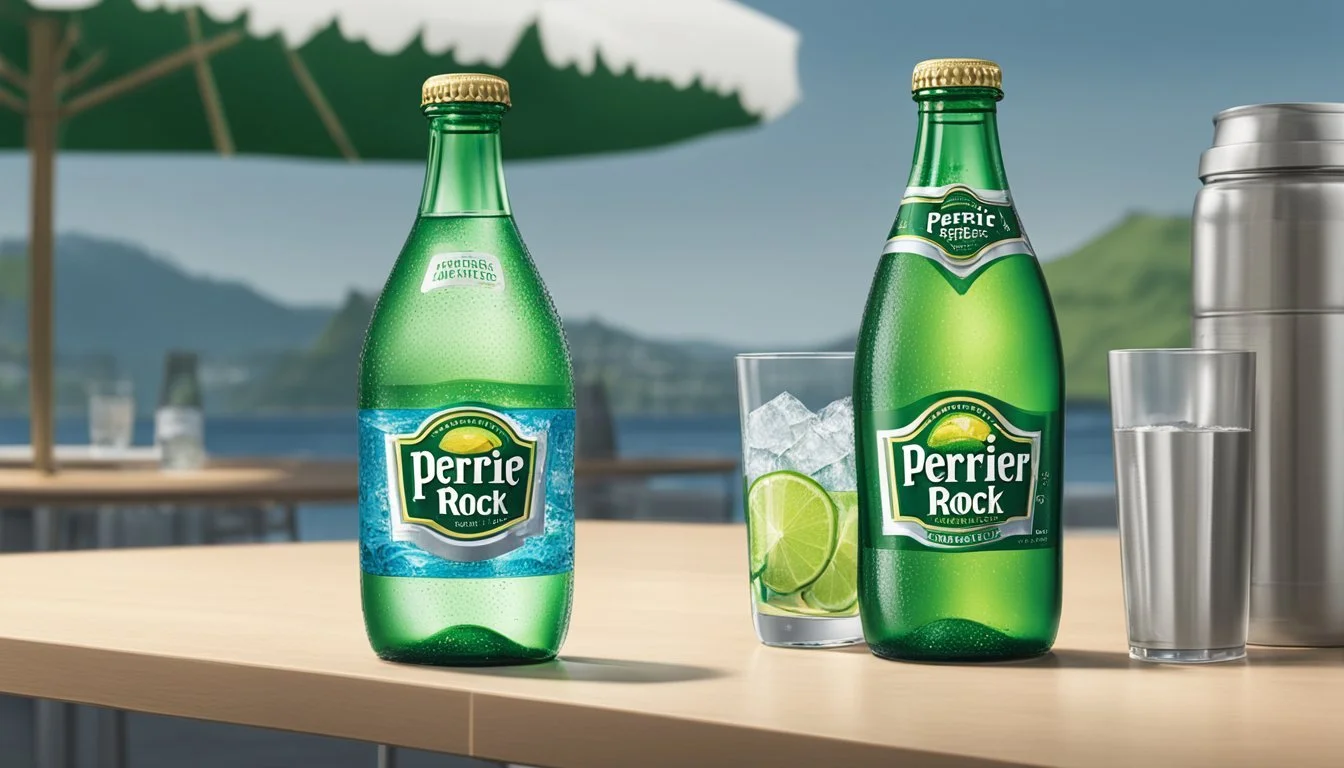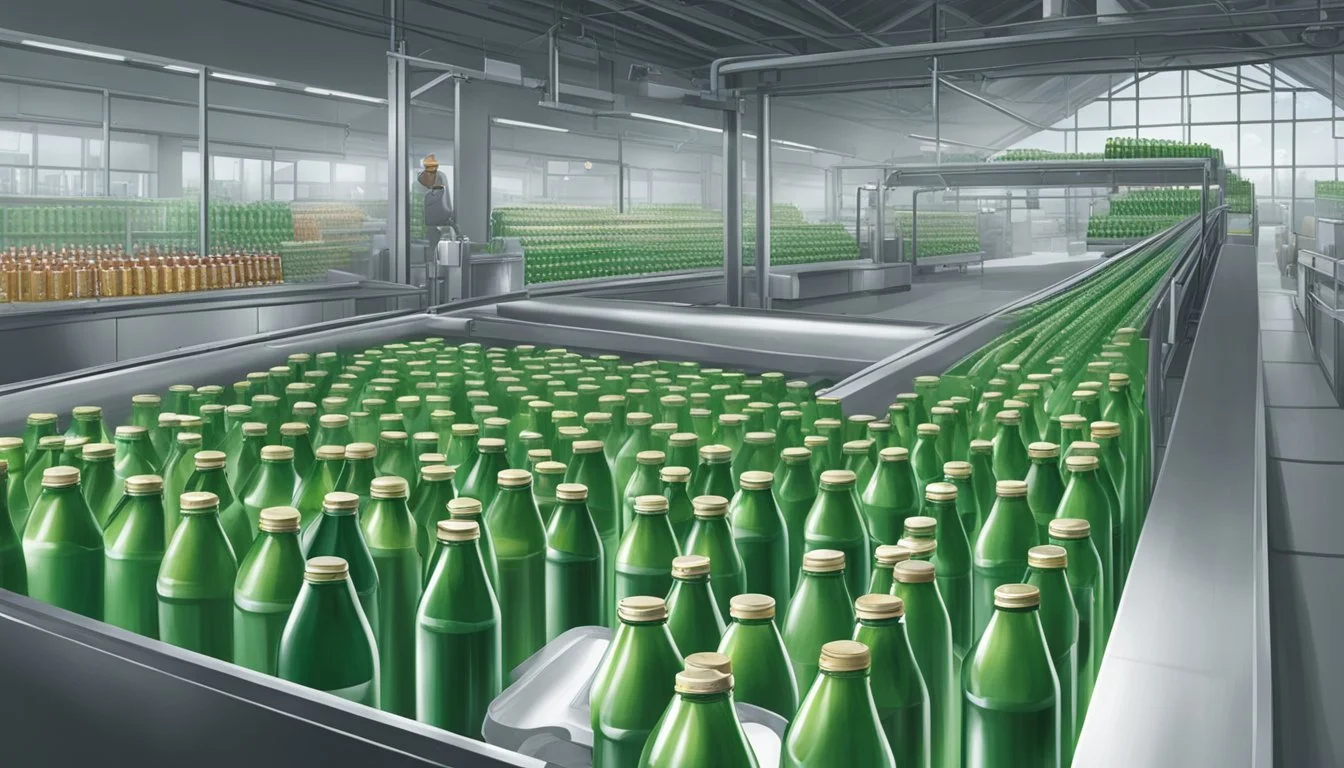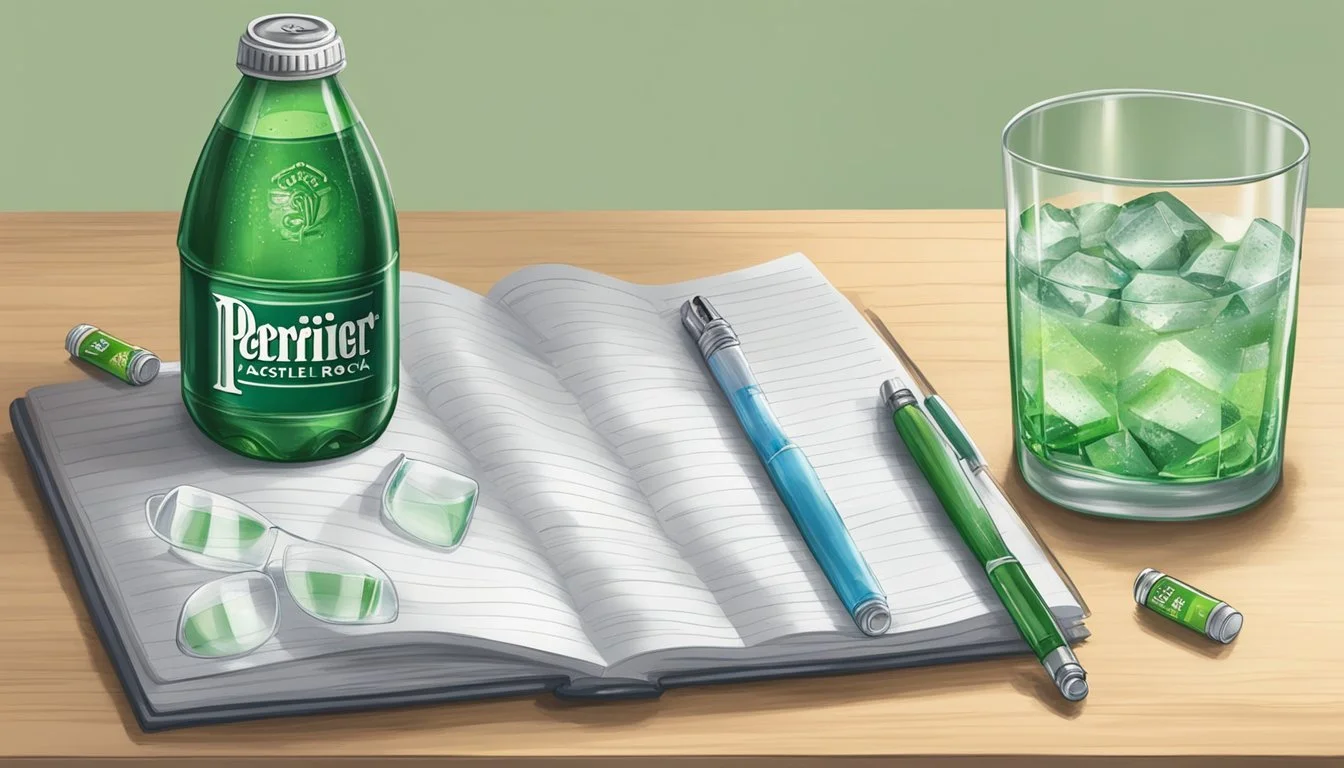Perrier vs. Castle Rock
Comprehensive Analysis of Superior Bottled Water
When choosing between Perrier and Castle Rock bottled water, it ultimately comes down to your preference for taste and the type of water you value most. Perrier, with its distinctive sparkling quality, has been a favorite for those who enjoy a crisp, refreshing experience. Its naturally carbonated bubbles and mineral-rich profile make it a unique choice among sparkling waters.
On the other hand, Castle Rock offers a pure and refreshing spring water that has been praised for its clean taste and minimal aftertaste. Originating from the pristine sources of Mt. Shasta in California, Castle Rock embodies the essence of nature's purity in every sip. For those who prioritize a clean, unaltered flavor profile, Castle Rock could be the better option.
Choosing between the two ultimately depends on personal preference. Perrier may appeal to those who enjoy a sparkling refreshment, while Castle Rock serves those looking for a pure, natural spring water experience. Each has its merits, ensuring that both brands cater to different tastes and needs.
Understanding Bottled Water
Bottled water appears in various forms, including mineral water, purified water, and natural spring water. Each type has unique characteristics and origins, influencing its taste and health benefits.
Mineral water is sourced from mineral springs, containing essential minerals like calcium, magnesium, and potassium. These minerals can affect the water's taste and potential health benefits.
Purified water undergoes processes like distillation or reverse osmosis to remove impurities. This type often lacks the minerals found in natural sources but offers a clean and crisp taste.
Natural spring water comes from underground springs. It's often filtered naturally, retaining a balance of minerals, contributing to its unique taste.
Popular Brands
Several brands dominate the market, with Perrier and Castle Rock being notable mentions.
Perrier is known for its sparkling mineral water sourced from Vergèze, France. It has a distinctive taste due to its natural carbonation and mineral content.
Castle Rock offers natural spring water sourced from the pristine springs of Mount Shasta in California. It prides itself on purity and a naturally balanced mineral composition.
Factors Affecting Taste
The taste of bottled water can vary significantly based on its mineral content and source. Mineral water often has a distinct flavor because of its mineral makeup, while purified water generally has a neutral taste.
Health Considerations
Mineral content in water can contribute to daily nutritional intake. Sodium levels, for example, might be a consideration for those on restricted diets.
Bottled water quality is regulated to ensure safety, but it is essential to read labels for specifics about mineral content and source.
Using this knowledge, consumers can make informed choices when selecting between different types of bottled water and brands like Perrier and Castle Rock.
History and Origin
The history of Perrier and Castle Rock reveals their unique heritages and their commitment to quality and natural sourcing. Both brands come from distinctive regions and have deep-rooted legacies in the bottled water industry.
Perrier: From the Source
Perrier, a globally recognized brand, is sourced from a natural spring in Southern France. The spring has a history dating back to Roman times, famed for its unique mineral content and natural carbonation. Napoleon III authorized the source in the 19th century, adding a regal touch to its storied past.
Perrier gained international fame in the 1970s and 1980s, becoming synonymous with sparkling water. Its iconic green bottle and bold bubbles distinguish it in a crowded market. The brand's extensive heritage and unique properties have solidified its status as a premium choice in bottled water.
Castle Rock: Nature's Offering
Castle Rock water hails from the pristine springs in California, specifically from the Mount Shasta region. Known for its pure and refreshing taste, Castle Rock sources its water from springs fed by ancient glaciers and deep aquifers. This ensures a consistent and high-quality water composition, free from contaminants.
Founded relatively recently compared to Perrier, Castle Rock focuses on sustainability and environmental stewardship. Their commitment to preserving natural resources and reducing their carbon footprint aligns with modern consumer values. This dedication to purity and the environment positions Castle Rock as a respected brand in the natural spring water market.
Water Quality and Mineral Content
This section looks at the mineral balance in Perrier and Castle Rock bottled water and how these minerals affect health. Focus is given to the levels and types of minerals present and their potential health benefits or concerns.
Analyzing Mineral Balance
Perrier: This sparkling water is known for its distinct carbonation and mineral content. It contains a mix of minerals such as calcium, magnesium, and potassium. The calcium content is around 150 mg/L, providing a notable source of this essential mineral. The sodium level is moderate at approximately 9.5 mg/L.
Castle Rock: Sourcing from pristine natural springs in California, Castle Rock water emphasizes purity with a balanced mix of essential minerals. It includes lower sodium levels compared to carbonated beverages. The calcium and magnesium content is moderate, adding to the mineral richness of this water without overwhelming the palate.
Health Impacts of Minerals
Calcium and Magnesium: Both Perrier and Castle Rock contain beneficial levels of calcium and magnesium, which support bone health and muscle function. Calcium content in Perrier is higher, making it a good choice for those needing more of this nutrient. Magnesium, essential for metabolic processes, is present in balanced amounts in both waters.
Sodium Levels: Lower sodium levels in Castle Rock water can be advantageous for individuals monitoring their salt intake. Perrier's sodium content is higher due to its carbonation process, which may not be suitable for all consumers.
Overall Health Benefits: Both Perrier and Castle Rock offer essential minerals that contribute to daily nutritional needs. Sodium, calcium, and magnesium intake from water can complement dietary sources, aiding overall health. Choosing between these two depends on specific health requirements and taste preferences.
Production Process
The production processes of Perrier and Castle Rock are integral to the overall quality and characteristics of each bottled water. Key aspects include the filtration techniques employed and the carbonation aspects that are unique to each brand.
Filtration Techniques
Perrier and Castle Rock use distinct methods to ensure their water is pure and safe. Perrier sources its water from a deep underground aquifer in Vergèze, France. This water undergoes natural filtration through layers of limestone, contributing to its mineral content.
Castle Rock, sourced from the pristine springs of Mount Shasta in California, employs reverse osmosis for its filtration. This method effectively removes impurities and enhances the water's purity without significantly altering its natural state.
These techniques ensure that both brands deliver safe, clean water while retaining the unique qualities of their sources.
Carbonation and Its Effects
The carbonation process significantly differentiates Perrier from Castle Rock. Perrier is renowned for its natural carbonation, which occurs as carbon dioxide from volcanic gases infuses the water in the underground spring. This results in Perrier's iconic, crisp bubbles.
Castle Rock does not naturally carbonate its water. For consumers who prefer non-carbonated options, this can be a distinct advantage. However, they also offer a sparkling variant where controlled carbonation is applied to ensure a consistent bubble experience without compromising the water's purity.
Carbonation impacts not only the texture but also the sensory experience of drinking. Perrier's natural bubbles add a sparkling effervescence, whereas Castle Rock's controlled carbonation provides a balanced, mild fizz for those who enjoy a lighter sparkle.
Taste Profile and Palate
This comparison will explore the distinguishing taste characteristics of Perrier and Castle Rock, focusing on the crisp flavors, minerality, and overall palate experience provided by each brand.
Sparkling Versus Still
Perrier is known for its signature sparkling water. The bubbles in Perrier create a lively texture that enhances the drinking experience. A typical sommelier might describe its palate as refreshing with a hint of natural minerals that gives it a balanced, slightly salty flavor. This bubbly water provides a crisp finish, making it a popular choice for those who enjoy effervescence.
Castle Rock, in contrast, offers still water sourced from natural springs. It delivers a clean, pure taste with no carbonation to alter its texture. The subtle mineral content results in a smooth and soft palate, reminiscent of a morning hike in pristine environments. Those preferring a still water experience often appreciate Castle Rock's straightforward and refreshing taste profile.
The Role of Minerality
Minerality significantly impacts the taste of both Perrier and Castle Rock. Perrier contains a higher mineral content, including calcium, magnesium, and bicarbonates. These elements contribute to its slightly tangy and refreshing flavor, providing a fuller mouthfeel. The minerals accentuate the sparkling nature, giving it a distinctive edge on the palate.
Castle Rock's minerality is more subdued. Sourced from natural mountain springs, it has a delicate hint of minerals that enhance its clean and fresh taste without overwhelming the senses. This subtle minerality ensures a smooth finish, appealing to those who prefer a lighter and less pronounced mineral presence in their water. The balance of minerals offers a natural and crisp flavor that celebrates the purity of its spring origins.
Branding and Consumer Perception
Branding and consumer perception for Perrier and Castle Rock play crucial roles in their market positions and labels' authority. Each brand's reputation affects how consumers choose between them.
Market Position of Perrier and Castle Rock
Perrier is recognized globally as a premium sparkling mineral water brand, known for its distinctive green bottle and natural carbonation. This brand has positioned itself as a luxurious and sophisticated choice, often found in upscale restaurants and hotels. Perrier appeals to consumers who are willing to pay more for a perceived quality and style.
Conversely, Castle Rock, sourced from pristine springs in the Mount Shasta region, emphasizes its commitment to sustainability and purity. While not as internationally renowned as Perrier, Castle Rock attracts a niche market focused on environmental consciousness and natural water sources. Consumers of Castle Rock often prioritize the brand's eco-friendly practices and local sourcing over widespread brand recognition.
The Authority of Labels
Perrier's label and packaging highlight its status as a sparkling mineral water with natural carbonation, aiming to captivate buyers with both elegance and history. The brand's marketing often underscores its French origin and long-standing heritage, enhancing its authoritative image among premium bottled water brands.
Castle Rock’s labels focus on purity and environmental stewardship. The brand communicates its dedication to bottling water directly from natural springs, emphasizing the absence of any artificial processes. Consumers trust Castle Rock's label certifications and environmentally friendly claims, which align closely with their values regarding sustainability and health.
In summary, Perrier leverages luxury and historical prestige in its branding, while Castle Rock emphasizes purity and eco-consciousness to appeal to a specific consumer segment.
Environmental Considerations
Environmental impact is a critical factor consumers consider when choosing bottled water. This section explores the sourcing and sustainability practices of Perrier and Castle Rock, as well as their approaches to plastic use and recycling.
Sourcing and Sustainability
Perrier sources its water from a natural aquifer in Vergèze, France. The aquifer is renowned for its naturally carbonated mineral water. Perrier has introduced measures to ensure the sustainability of its water extraction, including monitoring groundwater levels and minimizing disruptions to the local ecosystem. Perrier's efforts to protect the aquifer environment help maintain its renowned water quality.
Castle Rock sources its water from pristine springs in Mt. Shasta, California. These springs are fed by natural rainfall and snowmelt, ensuring a replenishing and sustainable source. The company emphasizes low-impact extraction methods to preserve the natural surroundings and maintain water purity. Castle Rock is committed to environmental stewardship by safeguarding the health of the local aquifer and adjacent ecosystems.
Plastic Use and Recycling
Perrier has been proactive in addressing plastic waste by utilizing a significant proportion of recycled PET in its bottles. The company has ambitious goals to increase the recycled content further and reduce the overall plastic footprint. Initiatives such as container return programs and partnerships with environmental organizations aim to enhance recycling rates and reduce pollution.
Castle Rock focuses on environmentally friendly packaging by using 100% recycled PET bottles. The company promotes responsible consumption and recycling habits among its customers. Additionally, Castle Rock participates in recycling campaigns and encourages customers to return bottles for reuse. By prioritizing recycled materials, Castle Rock helps mitigate the environmental impact associated with single-use plastics.
These considerations are fundamental for environmentally conscious consumers who are evaluating options between Perrier and Castle Rock bottled waters.
Comparative Analysis
The comparison of Perrier and Castle Rock centers around their price points and the nutritional values and benefits each offers to consumers. This analysis contrasts their costs and health benefits to help consumers decide which is better for their needs.
Price Point Comparison
Perrier is known for its reputation as a premium sparkling mineral water. This is reflected in its price, which generally tends to be higher than many other bottled water brands. Perrier's elevated cost can be attributed to its sparkling nature and the brand's positioning as a sophisticated choice among mineral waters.
Castle Rock, on the other hand, is often marketed as a more affordable alternative. It usually offers competitive pricing, appealing to budget-conscious consumers looking for high-quality still water. Castle Rock's lower pricing does not compromise on the quality, making it an attractive option for everyday hydration.
Nutritional Values and Benefits
Perrier contains a significant amount of minerals, contributing to its distinctive taste and potential health benefits. The water is rich in sodium and calcium, elements that are often sought by those interested in replenishing electrolytes and supporting bone health. The effervescence of Perrier can also aid in digestion, appealing to those who enjoy sparkling beverages.
Castle Rock prides itself on providing pure, natural water sourced from pristine locations. It contains fewer minerals compared to Perrier, making it ideal for those who prefer a clean and fresh taste without added sodium. The lower mineral content suits individuals aiming for simple, additive-free hydration, emphasizing natural purity.
Final Recommendations
When choosing between Perrier and Castle Rock bottled waters, it's essential to consider individual preferences and specific needs.
Taste and Source: Perrier is known for its sparkling nature and distinct carbonation, appealing to those who enjoy a fizzy experience. It is sourced from Vergèze, France. Castle Rock, sourced from Mount Shasta, California, offers a smooth, fresh taste, ideal for those preferring non-carbonated options.
Mineral Content: Perrier contains a unique blend of natural minerals, including calcium, magnesium, and bicarbonate, contributing to its distinct taste. Castle Rock water is praised for its purity and minimal mineral content, being a good choice for those seeking a lighter mineral profile.
Packaging and Sustainability: Perrier often comes in glass bottles which are eco-friendly but can be heavier to carry. Castle Rock prioritizes sustainable practices, using recyclable plastic and BPA-free bottles, making them more portable and environmentally considerate.
Price and Availability: Perrier is widely available in most grocery stores and comes in various sizes. Castle Rock is available in select regions and may be less accessible but often at a competitive price.
Tips:
To stay hydrated, choose a water that you enjoy and are likely to drink regularly.
Consider the environmental impact of your choice, opting for brands that prioritize sustainability.
Evaluate the mineral content based on personal dietary needs and preferences.
Bottom Line: Perrier and Castle Rock both offer unique benefits. Your choice should depend on taste preferences, mineral content, environmental considerations, and availability. Both options support hydration and a healthy lifestyle.
More About Perrier
Icelandic Glacial vs Perrier: Which Bottled Water is Better?
Mountain Valley Spring Water vs Perrier: Which Bottled Water is Better?
Perrier vs Kirkland Signature: Which Bottled Water is Better?
Perrier vs Richard's Rainwater: Which Bottled Water is Better?
Perrier vs Whole Foods Italian Still Mineral water: Which Bottled Water is Better?
More About Castle Rock
Aqua Carpatica vs Castle Rock: Which Bottled Water is Better?
Castle Rock vs Cascade Mountain: Which Bottled Water is Better?
Castle Rock vs Crystal Geyser: Which Bottled Water is Better?
Castle Rock vs Hawaii Volcanic: Which Bottled Water is Better?
Castle Rock vs Hawaiian Springs: Which Bottled Water is Better?
Castle Rock vs Kirkland Signature: Which Bottled Water is Better?
Castle Rock vs Purely Sedona: Which Bottled Water is Better?
Castle Rock vs Richard's Rainwater: Which Bottled Water is Better?
Castle Rock vs Solan de Cabras: Which Bottled Water is Better?
Castle Rock vs Talking Rain AQA: Which Bottled Water is Better?
Castle Rock vs Whole Foods 365: Which Bottled Water is Better?
Castle Rock vs Whole Foods Italian Still Mineral water: Which Bottled Water is Better?
Core Hydration vs Castle Rock: Which Bottled Water is Better?
Icelandic Glacial vs Castle Rock: Which Bottled Water is Better?
Mountain Valley Spring Water vs Castle Rock: Which Bottled Water is Better?
Nestle Pure Life vs Castle Rock: Which Bottled Water is Better?
Poland Spring vs Castle Rock: Which Bottled Water is Better?
San Pellegrino vs Castle Rock: Which Bottled Water is Better?










